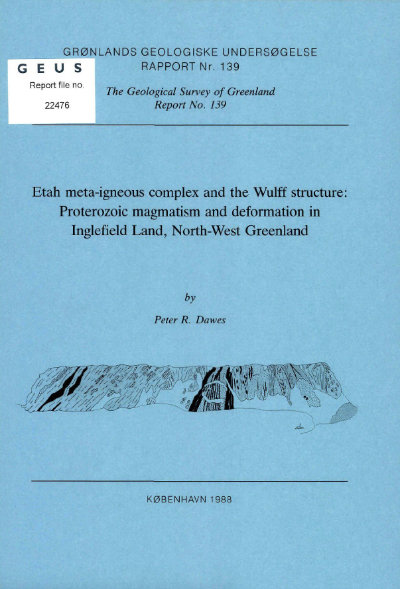Etah meta-igneous complex and the Wulff structure: Proterozoic magmatism and deformation in Inglefield Land, North-West Greenland
DOI:
https://doi.org/10.34194/rapggu.v139.8021Abstract
A hitherto uninvestigated collection of crystalline rocks from north-eastem Inglefield Land (c. 79°N) allowanew interpretation of the Precambrian geology of the region. The majority of the samples - high-grade basic, intermediate and granitoid rocks - are referred to the Etah meta-igneous complex, which has been shown to be mid-Proterozoic in age in the type area in south-western Inglefield Land. In areas of high deformation there is a gradation from massive rocks of igneous aspect into folded and variably migmatised gneisses. Thus the magmatic complex provides a gauge of the nature and intensity of Proterozoic (Hudsonian) deformation and metamorphism. In Inglefield Land Proterozoic deformation produced different structural styles; thus in the north-east the Wulff structure - a large-scale refolded isoclinal structure - characterises a region that lacks an obvious preferred regional foliation direction, while in the south-west, linear E-W trending belts with steep dips dominate the structural pattem. The Proterozoic evolution is outlined from the formation of the Etah Group, a supracrustal sequence that pre-dates the Etah meta-igneous complex, to uplift, peneplanation, deposition and magmatism in the late Proterozoic. Inglefield Land is not part of the Rinkian mobile belt of West Greenland, and it is stressed that the obvious continuation of the Proterozoic geology is into Ellesmere Island.
Downloads
Published
Issue
Section
License
This article is distributed under a CC-BY 4.0 licence, permitting free redistribution and reproduction for any purpose, even commercial, provided proper citation of the original work. Author(s) retain copyright over the article contents.


